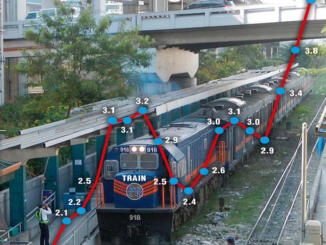
The Philippines is being pummeled by its ASEAN neighbors in the race to attract the lion’s share of the world’s tourists visiting Southeast Asia.
In 2017, the Philippines had 6.62 million arrivals. That is a record and represents an 11% gain from 2016’s 5.96 million visitors, which was an 11.3% jump from 4.775 million in 2015. In two years, tourism arrivals grew a spectacular 23.48% or an average of 11.76% per year.
 At 10% annual growth rate, the Philippines’ tourist arrivals will reach only 11.72 million by 2023 and 12.902 million by 2024, when Ramon Ang’s San Miguel Airport in Bulacan starts operations with two runways.
At 10% annual growth rate, the Philippines’ tourist arrivals will reach only 11.72 million by 2023 and 12.902 million by 2024, when Ramon Ang’s San Miguel Airport in Bulacan starts operations with two runways.
At 10% annual growth rate, the Philippines won’t hit its 20 million arrivals until 2029—11 years from today. To hit 20 million arrivals by 2023, arrivals must jump by 20% clip per year over the next five years. Is that possible?
A 20% annual growth, the fastest ever for the Philippines, will require a lot of focus, aggressive tourism promotion, and heavy investments in tourism and other infrastructure.
 Samie Lim, the tourism chair of the Philippine Chamber of Commerce and Industry (PCCI), estimates that to reach 20 million arrivals, both the government and the private sector must invest at least $2 billion per year in tourism and other infra, including hotels, resorts, roads, highways, and most importantly, airports.
Samie Lim, the tourism chair of the Philippine Chamber of Commerce and Industry (PCCI), estimates that to reach 20 million arrivals, both the government and the private sector must invest at least $2 billion per year in tourism and other infra, including hotels, resorts, roads, highways, and most importantly, airports.
Over the last 11 years, the Philippines, a country of 105 million and 7,600 islands, has languished in sixth position in number of arrivals among the eight major ASEAN member states. Its tourism arrivals have remained at single digit level (5 million to 6 million) annually.
Indonesia hit its 10 millionth arrival in 2015 with 10,407,000, up 113% from 4.87 million in 2006, a whopping rise of 5.537 million arrivals.
During the same period, arrivals in the Philippines increased by only 2.51 million (half of the Indonesian gain), from 2.843 million in 2006 to 5.361 million, an increase of 88.5%.
In 2017, Thailand hosted the most number of arrivals in ASEAN, with 35.38 million, an increase of 21.55 million guests or 156%.
In the same period, arrivals in the Philippines rose by only 3.77 million or by 132%. The increase in arrivals for Thailand was 5.7 times that of the Philippines.
Yet, they say, the Philippines has far more and far better attractions than Thailand, in terms of cultural diversity (Catholic and Islam vs. Buddhism for Thailand, not to mention 456 years of Spanish conquest, 52 years of American tutelage and four years of Japanese occupation), beaches (Boracay, El Nido, and Coron are rated among the world’s best beaches and islands).
So why has the Philippines been such a laggard in the tourism game—today the largest and richest industry in the world? Simple answer: The Philippines has the world’s worst airports.
— Tony Lopez



